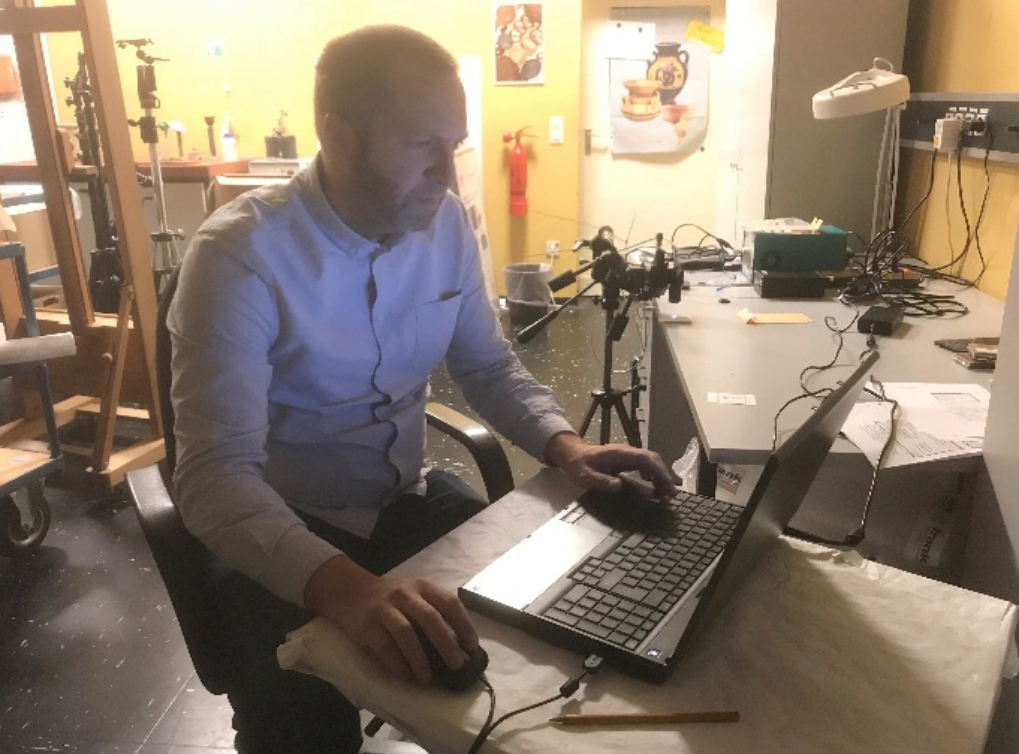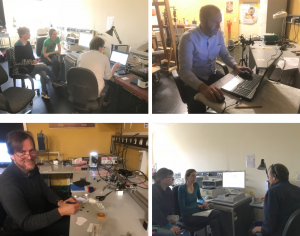User Leader: Magnus Mårtensson
https://www.raa.se/in-english/
Venue: Rathgen Forschungslabor (DE)
The Swedish National Heritage Board is as a public agency responsible for the development and implementation of heritage science in Sweden. Through its Heritage laboratory, the agency provides analytical and scientific support for heritage institutions and museums in Sweden. Heritage institutions can apply for access to the laboratory and staff in cooperative projects. Likewise, the Heritage laboratory is striving to increase the use and availability of its mobile facilities.
Questions addressed by Access
The aim of this visit to the Rathgen Forschungslabor was to exchange experiences and development possibilities regarding Raman and Microfading in cultural heritage applications.
Main objectives of the project proposal
- Raman: The comparison of instrumentation with a view to their analytical capabilities and limitations. An exchange of databases containing materials relevant to cultural heritage and database expansion with pigments from the reference collections held at the Rathgen Forschungslabor.
- Microfading: To exchange experiences and development possibilities of Microfading in cultural heritage. Focus areas were the credibility of using Blue Wool as a reference and calibration material as well as report standards and comparability of the instruments regarding results with different light sources and light intensity and also environmental factors such as temperature and relative humidity.
Main achievements of the ARCHLAB visit
During the week-long visit the three scientists/advisors from the Swedish National Heritage Board (SNHB) got to know staff from the Rathgen Forschungslabor and gained an insight into its institutional organisation and work-flow. Such work relationships and experiences are helpful to the approach the SNHB takes in strengthening heritage science in Sweden.
The SNHB’s newly acquired BWTek portable Raman microscope was compared with the more sophisticated Horiba Raman microscope available at the Rathgen Forschungslabor. Samples of pigments and paint cross sections from current analytical projects at the SNHB were measured with both instruments and results compared. This was a very useful exercise to better understand the capabilities and limitations of the respective instruments. Previously not analysed pigments and lacquer swatches from the Rathgen Forschungslabor’s reference collections were selected and the acquired spectra added to both institutions’ reference databases. A comparison of library search functionalities and respectively used software packages as well as the mutual exchange of relevant databases of Raman and FTIR spectra significantly increases both institutions’ abilities to identify unknown materials from cultural heritage contexts.
The final two days of the visit were used for the exchange of experiences in Microfading. Both institutions’ instruments were set up in the same room and a range of samples and reference standards measured concurrently. Fruitful discussions unfolded about instrument specifications and modifications, Blue Wool standard limitations, environmental influences, data handling, and result reporting. Is it hoped that this first exchange will lead to future collaborations and possibly spark the initiation of an international standard for the use of Microfading in cultural heritage applications.
Dissemination
The IPERION CH ARCHLAB visit was presented to representatives from other cultural heritage institutions and partners of the Swedish National Heritage Board at a Swedish network meeting about E-RIHS. The visit was also disseminated through social media channels of the SNHB.


